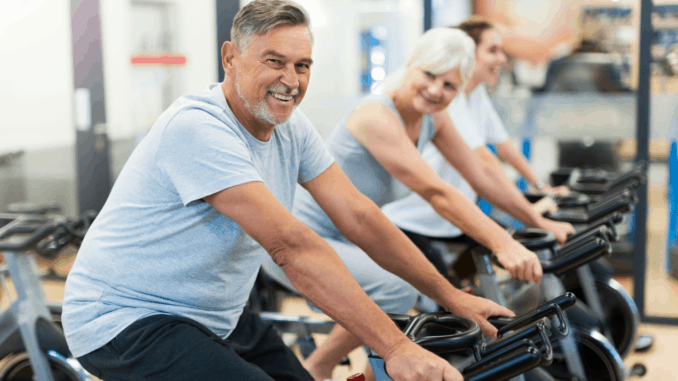
[cmamad id=”25816″ align=”center” tabid=”display-desktop” mobid=”display-desktop” stg=””]
Men who do this for 8 hours or more a day are 52% more likely to die sooner than other men…
—-Important Message—-
My pain stopped when I drank this
As we age, the pain of a fall or a bruising can stay with you for years!
I busted my knee in the car – and I still felt the pain even months after the bruising went away.
So what was different when we were kids?
Our metabolism was just so fast that it would heal and repair damage immediately.
But as we age our metabolism slows down…
So how can we make our metabolisms faster so we feel less pain and we regenerate faster?
I found that drinking this simple shake in the morning speeds up my metabolism…
With this, not only do your wounds heal faster, but your energy levels soar and so does your sexual performance.
Here’s the metabolic drink that soothes pain, regenerates your body, and improves your sex life.
———-
Men Who Do This Every Day Are More At Risk for Early Death
By now you have probably heard this phrase: “Sitting is the new smoking.”
Indeed, researchers have found that sitting for long periods of time increases the risk of death.
New research shows that adding vigorous activity (exercise) to your weekly habits can significantly lower the risk of death associated with sitting.

This study – from the University of Sydney, the Norwegian Institute of Public Health, and Loughborough University in the UK – consisted of in-depth analysis of human studies.
The Journal of the American College of Cardiology published the paper.
The paper uses the term “moderate to vigorous intensity physical activity.”
Effectively, this means exercise or hard physical labor.
The study looked at the effect of this type of physical activity on death from cardiovascular disease and all other causes.
“The purpose of this study was to examine the joint and stratified associations of sitting and vigorous activity with all-cause and cardiovascular disease mortality.”
The researchers used information from a study that included almost 150,000 people over an average of nine years per person.
Almost 9,000 people died during the period of the study.
The study kept detailed records on how long people spent sitting and the amount of vigorous activity they engaged in.
Vigorous physical activity and sitting both had a strong (but opposite) effect on the risk of death.
“There was a statistically significant interaction between sitting and vigorous activity for all-cause mortality.”
People who sat for more than eight hours per day and did no vigorous activity were 52% more likely to die.
“Among those reporting no vigorous activity, the all-cause mortality hazard ratio comparing the most sedentary to the least sedentary groups was 1.52.”
People who got less than 2.5 hours of vigorous exercise had an increased risk of death – according to how much time they spent sitting.
“Sitting time was associated with both mortality outcomes in a nearly dose-response manner in the least active groups.”
The risks of sitting were decreased when people got more physical exercise.
People who got more than 2.5 hours of vigorous activity per week were at less risk from sitting for long periods.
“There was inconsistent and weak evidence for elevated mortality risks with more sitting among those meeting recommendations of greater than 2.5 hours [of] vigorous activity per week.”
A few hours of vigorous physical activity seems to decrease the risk of a sedentary lifestyle.
[cmamad id=”25817″ align=”center” tabid=”display-desktop” mobid=”display-desktop” stg=””]
The benefits of vigorous activity, or just walking, were greater for people who tend to sit for long periods.
“Replacing sitting with walking and vigorous activity showed stronger associations among high sitters (people who sit for more than 6 hours per day.)”
In the study, people who sat for less than 4 hours a day and got 5-7 hours of exercise each week had the lowest risk of death.
Those who sat for more than 8 hours per day and got no physical exercise were at greatest risk of death.
Sitting increases the risk of death from cardiovascular disease and other causes.
“Sitting is associated with all-cause and cardiovascular disease mortality risk among the least physically active adults.”
A few hours of vigorous activity, such as exercise, can remove much of the risk associated with sitting for long periods.
“Moderate to vigorous physical activity attenuator effectively eliminates the association between sitting and risk of death.”
People who sit for long periods should aim to sit less and exercise more for the most benefit.
“Reduction of sitting time is an important strategy, ancillary to increasing physical activity, for preventing cardiovascular disease and premature mortality in physically inactive populations.”
You should always consult a healthcare practitioner about treating and diagnosing health related problems.
—-Important Message for Men Who Don’t Like Exercising—-
Pop this in your mouth and get all the benefits of exercise without stepping into a gym…
For men who don’t like exercise (me included), testosterone gives the same benefits without the work.
Men with high testosterone have stronger, leaner muscles, less belly fat, a healthier heart, and perform better sexually.
And having high testosterone can actually help you live longer:

Pop this in your mouth and get all the benefits of exercise without stepping foot into a gym…
———-

- Sitting Time, Physical Activity, and Risk of Mortality in Adults
https://www.sciencedirect.com/science/article/pii/S0735109719337891?via%3Dihub
- Exercise and Physical Fitness
https://medlineplus.gov/exerciseandphysicalfitness.html - The 4 most important types of exercise
https://www.health.harvard.edu/exercise-and-fitness/the-4-most-important-types-of-exercise
